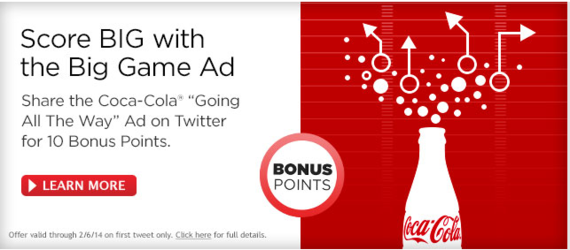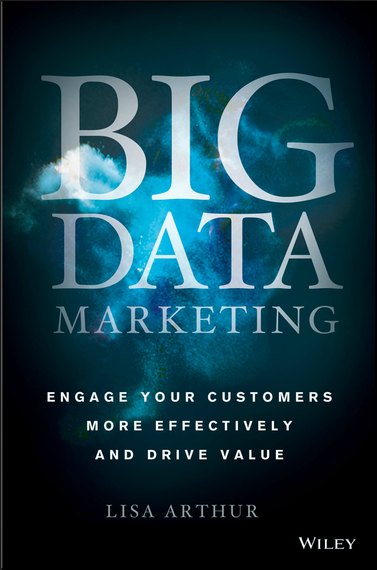Building loyalty and engagement with big data and gamification doesn't mean you have to lasso the moon.
Strategic marketers like Coca-Cola's Taylor Miffleton talk a lot about brand love. After all, it's the purest form of loyalty. Brand love emerges only after consumers make a primal connection with a product or service - a bond that's stronger than the lure of lower prices or snazzy new features.
Not long ago, cultivating brand love required equal helpings of hard work, patience and luck. But few companies today, no matter how hard they work, can afford to patiently wait for consumers to come around, and counting on a surfeit of good luck isn't much of a strategy.
Creating brand love today requires getting out in front of a fast-moving, digitally connected customer base marked by constantly shifting allegiances and an ability to chase the next best deal. In other words, you need all the help you can get.
Increasingly, that assist is coming from big data. For marketers, this means the swirling cosmos of structured and unstructured information culled from the mobile devices, social networks, enterprise applications, and networked products that mediate virtually everything we do in modern life. Every time we take action online or with a mobile device, we're revealing what interests and motivates us. With each of us throwing off this kind of data all day, every day, what brand wouldn't want to take advantage of it?
Yet while big data is getting plenty of attention in news headlines - thanks, NSA! - its practical uses seem to be eluding most marketers. This is a core thesis in a new book by Lisa Arthur, chief marketing officer for data analytics and warehousing giant Teradata. In Big Data Marketing: Engage Your Customers More Effectively and Drive Value, Arthur recounts a Teradata survey of marketers that powerfully illustrates the problem: 45 percent of marketers surveyed feel that data is the most underutilized asset in their organization, and just 10 percent believe they use data in a systematic, strategic way. This isn't what you want to hear from marketing executives expected to help drive incremental sales, improve customer retention, and generate demand in the marketplace.
Waders for Your Big Data Pools
Fortunately, Arthur's book offers some useful prescriptions for those trying to wade through the vast pools of new data their target users are creating every day. For instance, Step 3 in her five-step plan for big data marketing exhorts marketers to "Untangle the Data Hairball." By this Arthur means filtering out worthwhile signals from the great volume of data noise that can too often confuse and distract marketers. In other words, it's about knocking big data down to size so you can make some real use of it.
To do this, Arthur argues you need to start by defining your vision - what it is you want to accomplish. Only after you define those business goals can you determine which data is useful to your marketing effort and which isn't.
I can't agree more with this approach, and it's a key best practice of gamification, which essentially is motivating people through data. Take SAP, the enterprise software leader. Its gamified social business network, the SAP Community Network (SCN), has more than 2 million members, including SAP customers, partners and employees. SCN members generate plenty of big data by engaging in thousands of discussions every day, and interacting with hundreds of thousands of pieces of informational content. SAP uses that data to shape the gamification experience in ways that motivate members to participate, engage, and contribute more quality content to the community. But not everything in that stream of big data is useful for achieving those goals, so some hairball untangling is in order. For instance, since a key aim is to encourage more high-quality contributions, the gamified experience rewards contributors not for how often they post (which is determined by simple post volume data), but rather for the quality of their contributions (as determined by how many "helpful" votes their posts receive from other members).
I'm In the Mood for Brand Love
One of the by-products of a gamification program is a collection of user activity data that can be used to generate insights, be predictive, and last but not least, cultivate brand love. Which brings me back to Coca-Cola, who recently launched a gamified version of its MyCokeRewards site. The site offers fans of Coke, Coke Zero and other products a way to earn status and accumulate reward points that they can redeem for coupons, tickets and other perks. The gamified site differs from traditional rewards programs because it's not transaction-based (where you buy a soft drink and enter the code printed under the cap to get free stuff). Instead, Coca-Cola is rewarding consumers for sharing their love on Twitter, Facebook and Instagram through posts and photos bearing specific hashtags.
The campaign gives Coca-Cola a way to observe how consumers share their brand preferences with peers - which is a kind of Holy Grail for marketers, since 90 percent of shoppers surveyed in 2013 said they trust social media word-of-mouth over any other kind of advertising. The data of course feeds and influences the gamification experience, but it will also inform other marketing campaigns. And not incidentally, motivating consumers to engage in these behaviors begets another happy result: more brand ambassadors for Coke.
No matter how you're planning to build brand love, take a page from Lisa Arthur's Big Data Marketing and from the best practices of gamification: Take the time to unravel the data hairball and understand which information will help you reach your business goals. It'll keep you from feeling that your big data is just too big to be useful.

